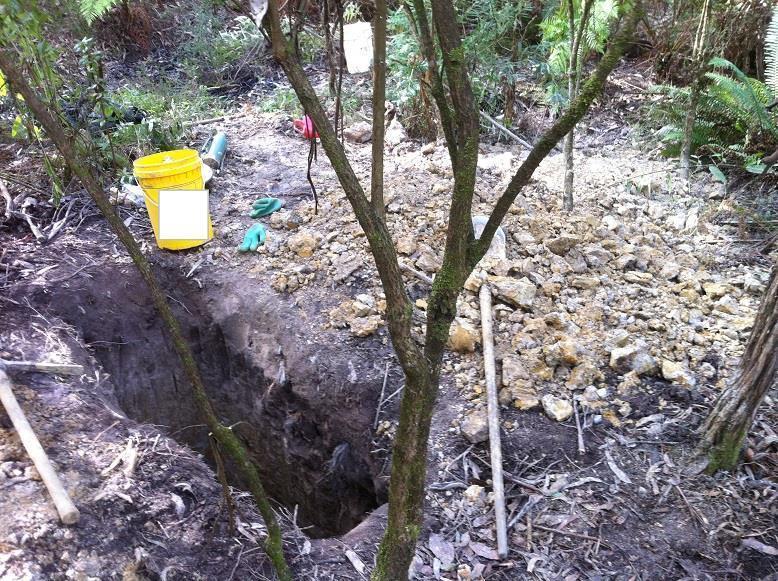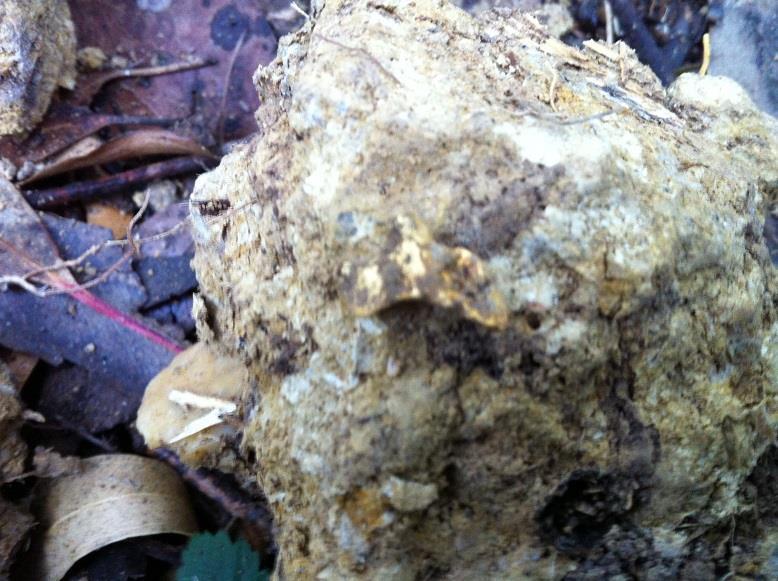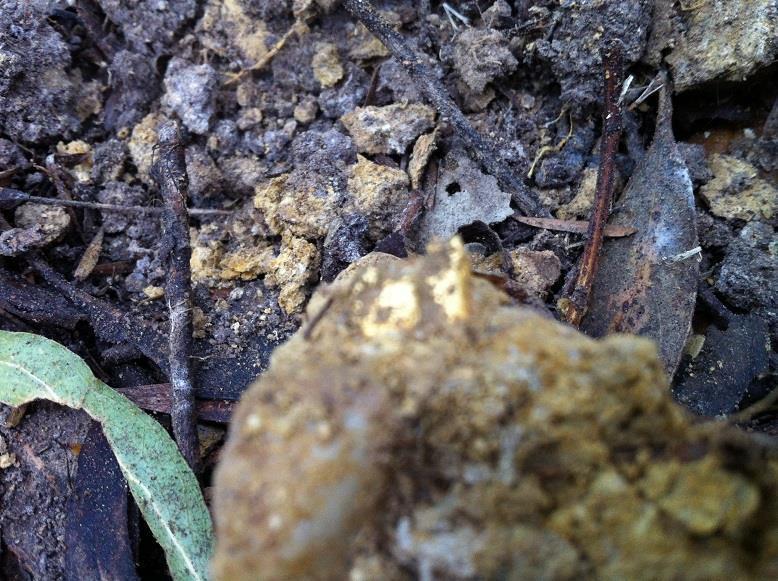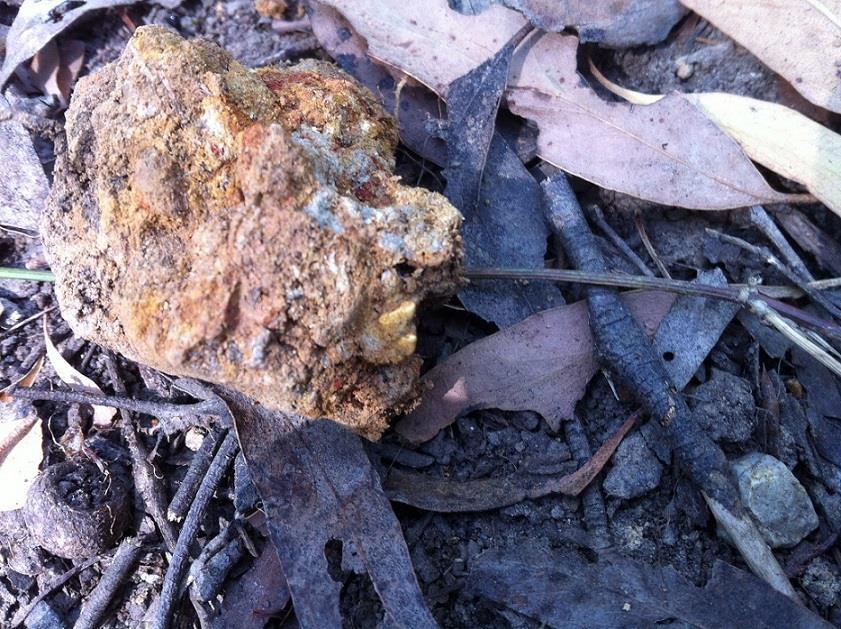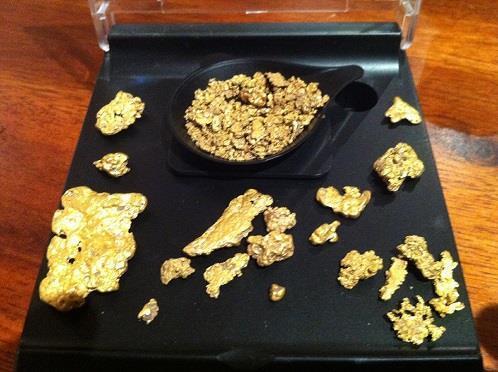There are a lot of shallow alluvial diggings in SA, mostly along creeks and rivers like the Onkaparinga, before being traced to its original source. From here, shafts were sunk into the newly discovered reefs and down to the deeper ancient river channels, sometimes quite a few metres below ground level, so no point in chasing them.
The gold in the Echunga goldfields, according to records, occurred in the a thin veneer of tertiary gravels and finer gold in the clays covering the hillsides and particularly rich in the gullies. Problem is a majority of this ground is on private property, as are most workings these days around the Adelaide Hills.
The gold was originally found on the alluvial flats of the Onkaparinga, and traced up the hill sides to the reefs and deep leads. Most of these later and deeper workings now exist in the fossicking reserves (and Chapel Hill & Jupiter Creek), and hence have been worked to the nth degree, and probably not really worth the effort digging holes there.
Many of the shafts that exist here intersect the old river channels, with the gold occurring in the gravels and clays(weathered bedrock) at the base of fresh bedrock, hence why some guys detect the white pipe clay that exists around the shaft openings. These shafts are very deep, and not worth entering unless you want to break your neck.
You will probably find they were pretty thorough working the shallow alluvial stuff, with many of the old alluvial workings now being hard to recognise aside from the odd spoil pile over the local farmland, sometimes you can spot them as you drive through the area. Although, there is mention that the alluvials in the area had been reworked on more than one occasion, so there may not be much left for the modern prospector. Another section mentions the fact that a lot of the miners were inexperienced or expected a lot richer grounds, and as a result, damned the ground as being barren, leaving fine gold and even nuggets on their claims, mullock heaps and tailings dumps. Hence why there have been successful reworkings of the alluvials on more than one occasion since the original miners took to the fields.
Even though you see a few shallow holes around with spoil piles next to them, you can pretty much guarantee that every bit of the surrounding has also been turned over and processed on more than one occasion, and not necessarily obvious today. You would probably better off panning off any excavated material, as if anything was left behind, it was probably fine gold. If you are going to scan over any material from these workings with a detector, best off with a high frequency detector to locate any small pickers (Whites GMT & Fisher GB2 come to mind).
Hope that info helps a bit.





